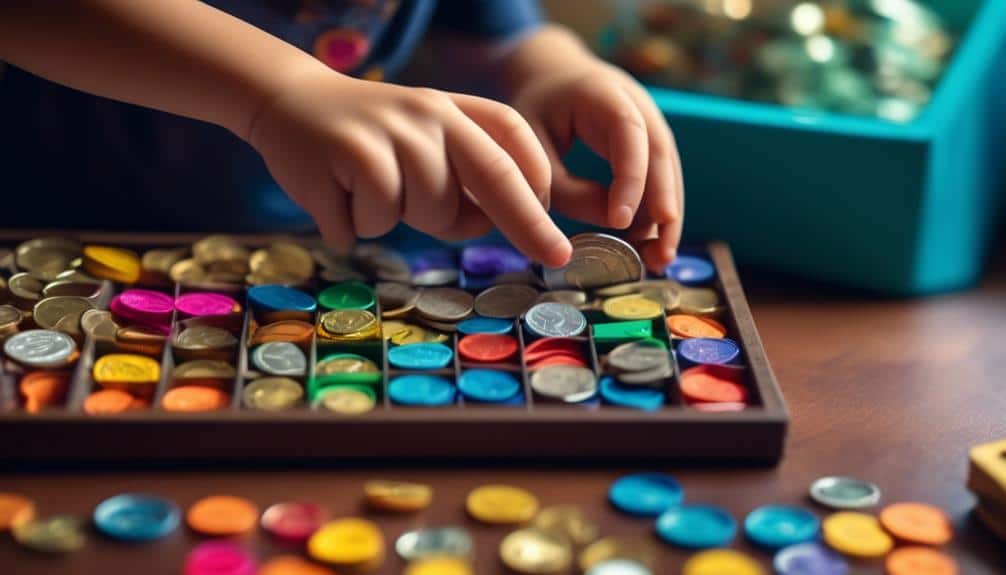Developing fine motor skills is a critical aspect of early childhood development, facilitating the acquisition of abilities essential for daily tasks such as writing, buttoning, and typing. Pediatric occupational therapists (OTs) often recommend targeted games that boost motor skills, engage children in playful activities, and foster the growth of these vital skills. Amongst the plethora of options available, certain games have been identified as particularly effective by experts in the field. These include, but are not limited to, activities that involve precise hand movements, such as bead threading, and those that require hand-eye coordination, like puzzle assembly.
While the benefits of such games are widely acknowledged, the underlying mechanisms through which they enhance acceptable motor proficiency remain a subject of professional investigation and discussion. Consequently, it is worth exploring how these therapist-endorsed games not only entertain but also contribute to a child’s developmental milestones and what makes them stand out in a sea of educational toys and resources.
Key Takeaways
- Sticker Fun and Paper Craft Challenges enhance fine motor skills, hand-eye coordination, and spatial awareness.
- Coin Sorting Games and Clothespin Clipping Tasks improve precision, finger movements, bilateral coordination, and hand-eye coordination.
- Enhancing Grip Strength activities bolster grip strength, intrinsic hand strength, finger strength, and coordination.
- Sidewalk Chalk Creations and Bead Threading Exercises stimulate creativity, enhance hand and finger strength, promote sensory-rich experiences, and develop hand-eye coordination.
Sticker Fun for Dexterity
Engaging in ‘Sticker Fun for Dexterity’ activities, children can enhance their fine motor skills and hand-eye coordination by meticulously placing stickers on various surfaces, fostering precision and strength in their developing hands. This playful method is designed to sharpen the pincer grasp, a vital fine motor skill where a child uses the thumb and forefinger to pick up objects. Such tasks contribute to grasp development, which is essential for writing and other daily activities.
As pediatric occupational therapists often recommend, ‘Sticker Fun for Dexterity’ promotes hand manipulation skills in a non-threatening environment. Children are naturally drawn to stickers’ colorful and rewarding nature, making it an enjoyable avenue for improving visual motor skills. Children also enhance their spatial awareness and precision by aligning stickers within outlines or patterns.
To serve the needs of children requiring acceptable motor strength improvement, ‘Sticker Fun for Dexterity’ offers a unique combination of fun and therapeutic benefits. It is a game that nurtures the joy of learning and the satisfaction of skill mastery. By integrating these activities into playtime, caregivers can support children’s motor skill development with empathy and effectiveness.
Paper Craft Challenges
Paper Craft Challenges offer children an artistic avenue to hone their fine motor skills by manipulating paper in cutting, folding, and sculpting activities. By engaging in these paper-based projects, they not only produce beautiful works but also refine crucial developmental abilities. The precise movements required in Paper Craft Challenges, such as the intricate folds of origami or the delicate swirls of paper quilling, strengthen the pincer grip and hand grasp. These tasks necessitate harmonious eye and hand coordination, enhancing a child’s visual perceptual skills.
When children wield scissors to cut paper or meticulously shape paper sculptures, they are practicing their scissor skills and hand dexterity. This form of play is rich in educational value, providing a sensory experience that is both tactile and visually stimulating. Caregivers and educators must provide a supportive environment where a child is encouraged to try, make mistakes, and persevere. The patience and attention to detail developed through Paper Craft Challenges will serve them well in all areas of life.
Incorporating Paper Craft Challenges into a child’s routine is a thoughtful way to cultivate their fine motor skills while nurturing their innate creativity.
Coin Sorting Games

Building upon the tactile and visual stimulation provided by Paper Craft Challenges, Coin Sorting Games present an equally enriching opportunity for children to enhance their fine motor skills and hand-eye coordination. Pediatric occupational therapists often recommend these activities to strengthen your child’s dexterity and bilateral coordination. As a caregiver or therapist, guiding children through the nuances of coin sorting can be a gratifying experience.
Here are four key ways coin-sorting games can develop essential motor skills:
- Enhancing Precision: Encourage children to pick up individual coins, honing their pincer grasp and improving precision in finger movements.
- Promoting Hand Strength: Stacking coins requires controlled movements, which builds hand and finger strength.
- Improving Bilateral Coordination: Sorting coins into piles or using both hands simultaneously to manage different denominations can enhance bilateral coordination.
- Boosting Hand-Eye Coordination: Dropping coins into a piggy bank or specific compartments requires visual motor integration and sharpening hand-eye coordination.
Embrace the simplicity and effectiveness of coin-sorting games. By incorporating these activities into playtime, you contribute to the foundational development supporting your child’s future learning and daily living skills.
Clothespin Clipping Tasks
As we transition from coin sorting to clothespin clipping tasks, we move into an area that significantly advances a child’s fine motor abilities. These simple yet effective activities enhance grip strength and are instrumental in refining the pincer grasp, a skill crucial for tasks ranging from writing to self-care. By selecting age-appropriate clothespin games, caregivers can ensure that children are challenged and encouraged in their developmental journey.
Benefits of Clipping Games
Clothespin clipping games serve as an effective tool for children to enhance their fine motor skills, including hand muscle strength and precision grasping abilities. The benefits of incorporating these games into a child’s routine are significant and multifaceted:
- Strengthening Hand Muscles: Regularly using the tweezers-like motion to clip and unclip helps develop the small muscles of the hands, which are vital for writing and daily tasks.
- Enhancing Hand-Eye Coordination: Children learn to align their visual perception with hand movements, a critical element in occupational therapy.
- Promoting Bilateral Coordination: The clip game’s benefits include using both hands coordinated, improving overall skill and function.
- Improving Precision and Control: These activities support precision grasp, contributing to better control over hand manipulation tasks.
Age-Appropriate Clothespin Activities
Understanding the numerous advantages of clipping games for fine motor development, it is essential to explore age-appropriate clothespin activities to enhance these skills in children. Attaching clothespins to board books for the youngest ones can ignite creativity while improving fine motor skills. As children grow, having them clip clothespins to their clothing can bolster body awareness and support independent dressing. Such tasks strengthen hand grasp and precision, which is pivotal in occupational therapy.
Incorporating these activities into daily routines enables a child to pick up and use a clothespin more efficiently, promoting independence. To progress, gradually increase the difficulty by introducing varied textures or smaller objects like pom poms to clip. This approach ensures a steady improvement in finger strength, coordination, and hand-eye coordination.
Enhancing Grip Strength
Regularly integrating clothespin clipping tasks into playtime activities can significantly bolster a child’s grip strength, an essential component of fine motor skill development. Occupational therapists recommend these activities to help with fine motor skills by enhancing intrinsic hand strength and hand grasp. Here’s how to incorporate these tasks:
- Attach lightweight items to a board using clothespins to promote hand strength and precision.
- Encourage clipping clothespins onto a container’s edge to strengthen finger coordination.
- Develop grip strength by having children hang art on a clothesline, engaging small muscles meaningfully.
- Enhance grip and finger dexterity by clipping paper cutouts to a string, making fine motor activities enjoyable and therapeutic.
Sidewalk Chalk Creations
Sidewalk Chalk Creations offers a dynamic way for children to develop their fine motor skills while expressing their artistic side on the vast canvas of driveways and sidewalks. As children grip and maneuver the chalk, they enhance their hand strength and hand-eye coordination, fundamental aspects of occupational therapy. This fun and engaging activity fosters artistic growth and encourages skill development in an outdoor setting, making it an ideal choice for activities at home.
| Benefits of Sidewalk Chalk Creations | How It Supports Fine Motor Development | |
|---|---|---|
| Stimulates Creativity | Encourages Precision and Control | |
| Enhances Hand and Finger Strength | Builds Hand-Eye Coordination | |
| Promotes Sensory-Rich Experiences | Integrates Gross and Fine Motor Skills |
It’s essential to provide a variety of chalk sizes to accommodate different grip abilities, thus catering to the diverse needs of all children. By creating an instructive and supportive environment, we can guide children through fun fine motor skills activities that contribute to their overall development. Regular practice is the key to enhancing these skills, so encourage children to explore their imagination with sidewalk chalk as often as possible.
Bead Threading Exercises

Bead threading exercises, utilizing a simple lace or string and a collection of beads, are efficient for enhancing children’s agility and coordination. Occupational therapy practitioners often recommend these activities to support fine motor development for youngsters enjoyably and educationally.
When guiding children through bead threading exercises, consider the following steps to ensure a structured approach to skill advancement:
- Start with Larger Beads: Begin with larger beads to help children gain confidence and master the primary motion of threading without becoming easily frustrated.
- Progress to Smaller Beads: Gradually introduce smaller beads to increase the challenge and refine hand-eye coordination and fine motor skills.
- Incorporate Bilateral Skills: Encourage using both hands to promote bilateral integration, which is essential for writing and scissors.
- Reinforce Muscle Memory: Regular practice of threading can enhance muscle memory and build hand and finger strength, contributing to overall fine motor development.
Pick Up Sticks Mastery
Building upon the skill and coordination honed through bead threading exercises, ‘Pick Up Sticks Mastery’ offers additional complexity to fine motor skill development by challenging children to isolate fingers and carefully extract sticks without disturbing others. This activity not only refines fine motor skills but also enhances hand-eye coordination, laying a foundational skill set critical for daily tasks like writing and self-care.
The game is elegantly simple in concept yet rich in developmental benefits. As children grasp each stick, they perform precision grasp exercises that strengthen their fingers and hand muscles. By varying finger usage, they learn to control each finger independently, a skill known as finger isolation. This fosters dexterity, instrumental in tasks requiring fine skills, such as buttoning a shirt or managing zippers.
Moreover, ‘Pick Up Sticks Mastery’ demands attention to detail and concentration, qualities that serve children well in academic settings. As an engaging and interactive way to build fine motor skills, it is a valuable tool for caregivers and educators striving to support children’s growth. Through play, children develop the fine finger skills and grasp techniques necessary to navigate their world with confidence and success.
Bubble Popping Techniques

Engaging children in the simple joy of bubble popping offers a delightful way to enhance fine motor skills through targeted finger movements and controlled force application. Occupational therapy often utilizes bubble-popping techniques to refine the coordination and strength of the fine motor muscles in a child’s hands, making it a practical and enjoyable intervention.
Here are some strategies to incorporate during bubble activities:
- Pincer Grasp Practice: Encourage children to use their thumb and index finger—a fundamental pincer grasp—to pop individual bubbles. This grip is crucial for tasks such as writing and buttoning.
- Varying Pressure: Teach children to regulate the pressure they apply with their fingers. This can improve their hand strength and control, which is crucial for tasks requiring a delicate touch.
- Precision Popping: Challenge the child’s hand-eye coordination by having them aim to pop bubbles with precision. This can be done by blowing bubbles and instructing the child to pop specific ones.
- Exploring Textures: Use bubbles with different sizes and consistencies to provide a multisensory experience that can further refine their tactile perception and adaptability.
These activities promote fine motor development and offer a way for those dedicated to serving children to create a playful and therapeutic learning environment.
Frequently Asked Questions
Does a Pediatric Occupational Therapist Help With Fine Motor Skills?
Yes, pediatric occupational therapists (OTs) specialize in helping individuals improve fine motor skills, which are crucial for performing daily tasks with mastery and independence. They employ a range of strategies and exercises tailored to each client.
What Activities Help a Child Boost Motor Skills?
Activities like sticker applications, stringing objects, paper manipulation, coin sorting, and clothespin clipping enhance children’s fine motor skills. These tasks support the development of precision and hand strength.
What Are 5 Fine Motor Skills for Infants?
Five essential fine motor skills for infants include grasping, releasing objects, reaching for items, exploring textures and shapes, and engaging in basic activities like stacking, nesting, and scribbling with crayons.
Does Lego Help With Fine Motor Skills?
Lego activities enhance children’s fine motor skills, necessitating precision and coordination while assembling, sorting, and manipulating the various trim pieces, fostering hand strength and agility.
Conclusion
Physical activities are essential for developing fine and gross motor skills during childhood. Engaging children in fun and challenging motor activities is a great way to improve motor development. Bike riding is a great activity that helps develop motor skills. Creating obstacle courses is another fun activity that can enhance motor skill development. Obstacle courses with uneven surfaces, trampolines, or climbing equipment can be made indoors or outdoors.
Playing with beach balls, participating in dance classes, and playing in the water are fun activities that improve balance and eye-hand coordination. Children can also improve core, arm, and balance by playing with hula hoops, jumping on mini-trampolines, or walking on unstable surfaces.
Childcare providers can incorporate physical activities into their programs to help children develop motor and social skills. They can provide children with balls, have a basketball hoop, or set up a water table. Incorporating physical activities into everyday activities like laundry or using utensils can help children develop motor sequencing skills and adequate core and muscle strength.
Pediatric occupational therapists can create individualized programs to help children develop their motor skills and body control. They can use activities like animal walks, motion boards, or climbing domes to challenge children at their level. Additionally, they can use cookie cutters, stickers, and safety rules to help children develop foundational skills necessary for literacy and scissor skills.
Children can also practice motor skills by building shapes with pasta or threading cereal onto a string. Playing catch with friends, participating in dance classes, or having a dance party at home can also be great ways to practice body movements and improve muscle tone.
In conclusion, physical activities are essential for childhood development, and there are many different ways to engage children in fun and challenging motor skill activities. Whether it’s bike riding, creating an obstacle course, playing with beach balls, or participating in dance classes, children can improve their motor skills, body movements, and social skills while having fun. We can support their physical, cognitive, and social-emotional development by providing opportunities for children to engage in physical activities.


Recent Comments